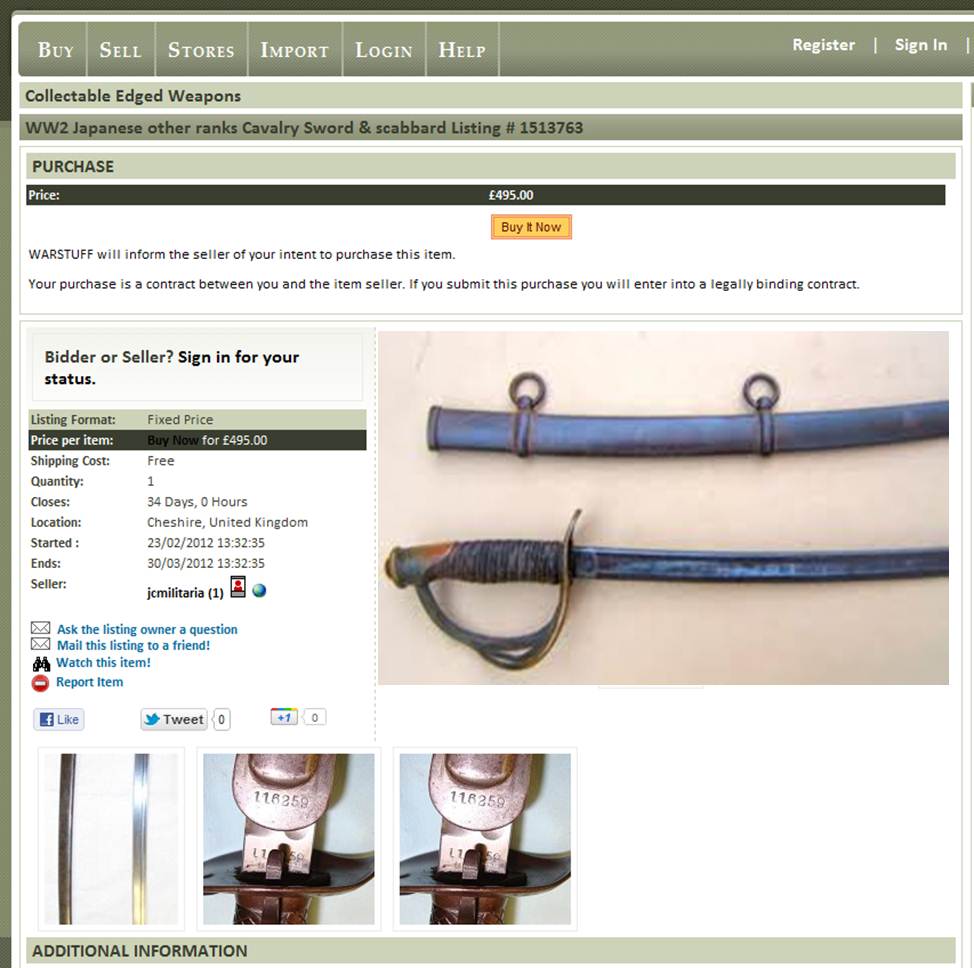
JAPANESE SOLDIERS took their family swords to battle during WWII. Many of these swords became bring back souvenirs and today are some of the most sought after war relics on the market.
JUST AS IN the days of the samurai hundreds of years before WWII, many soldiers went to war following the path of the warrior and carrying that symbol of war, the sword. But not all Japanese soldiers took their family blades to war. If a soldier did not have a family edged weapon, or did not want to take it to war, the Japanese government and war machine appropriately equipped them.
Swords were often picked up on the battlefield by allied troops and taken back home after the war. Many ended up being used as tools for working around the yard. Towards the end of the Pacific War, the Japanese themselves were so desperate for steel they turned to melting swords. The result is good quality WWII Japanese swords in great condition are becoming harder to find and prices for them are rising.
You may already be an expert on WWII era Japanese swords yourself, or you may be completely new to collecting these types of artifacts. Whichever you are, here are our top five tips to buying a WWII era Japanese blade.
(1) The first thing you should understand when approaching buying an antique weapon of any sort is applicable laws, and swords are no exception. Here in the UK, the sale of samurai and other curved swords is governed by law, and you should understand your legal position fully before offering a sale or making a purchase.
(2) When you approach buying a Japanese sword, handle it with a soft cloth. Fingerprints left on a bare steel blade may cause rust and spoil the blade’s quality. Dealers will not thank you for casually handling their goods, neither will the future owner. Rust, fingerprints, nicks to the edge of the blade, imperfections all devalue a sword. And, cleaning and polishing a blade is a professional job – so don’t automatically assume a rusty blade can be easily cleaned up. You’re better off leaving it as it is.
(3) WW2 era Japanese swords were often signed and dated. To find the signature of the maker and the date, you have to remove the handle to expose the tang. Dates typically consist of numbers, written in ‘kanji’, and the symbols for year, month and day. The period for WWII manufactured swords is the ‘Showa’ period. The dates were based on a Showa period stamp plus the number of years into the period where the sword was made. Signatures consist of 5 to 7 characters and are typically stamped, but sometimes red or white painted can be found. Make sure you do your research to know what you’re looking at as it’s not uncommon to find forged signatures for the most sought after producers. Also make sure you know how to remove the handle without damaging it, or don’t be afraid to ask the seller to do this for you if you’re unsure.
(4) WWII era swords may also have a serial number which may appear on different parts of the sword. For example, for the ‘Tsuba’ sword, a 3-digit number may be found stamped on the spacer and the scabbard. Matching numbers are the most sought after. It’s also not uncommon to find an arsenal stamp, also on the tang.
(5) Handmade blades may bow, so don’t automatically discount a blade if it’s not quite straight. This is due to the multiple layers of metal created during the production process. Pick the blade up to eye level and look at it from the handle to the tip of the blade. If there is a slight bow it will affect the value, obviously straight blades carry a premium, but an original sword with a subtle bow is still a highly collectable artefact.
Final point is do your research. Like any investment, you must understand your subject and know what you, the buyer must examine, judge, and test the sword on before you buy it. So now you know our top five tips for buying a WWII Japanese Sword or relic, where do you go next? Visit our buying page of course.

